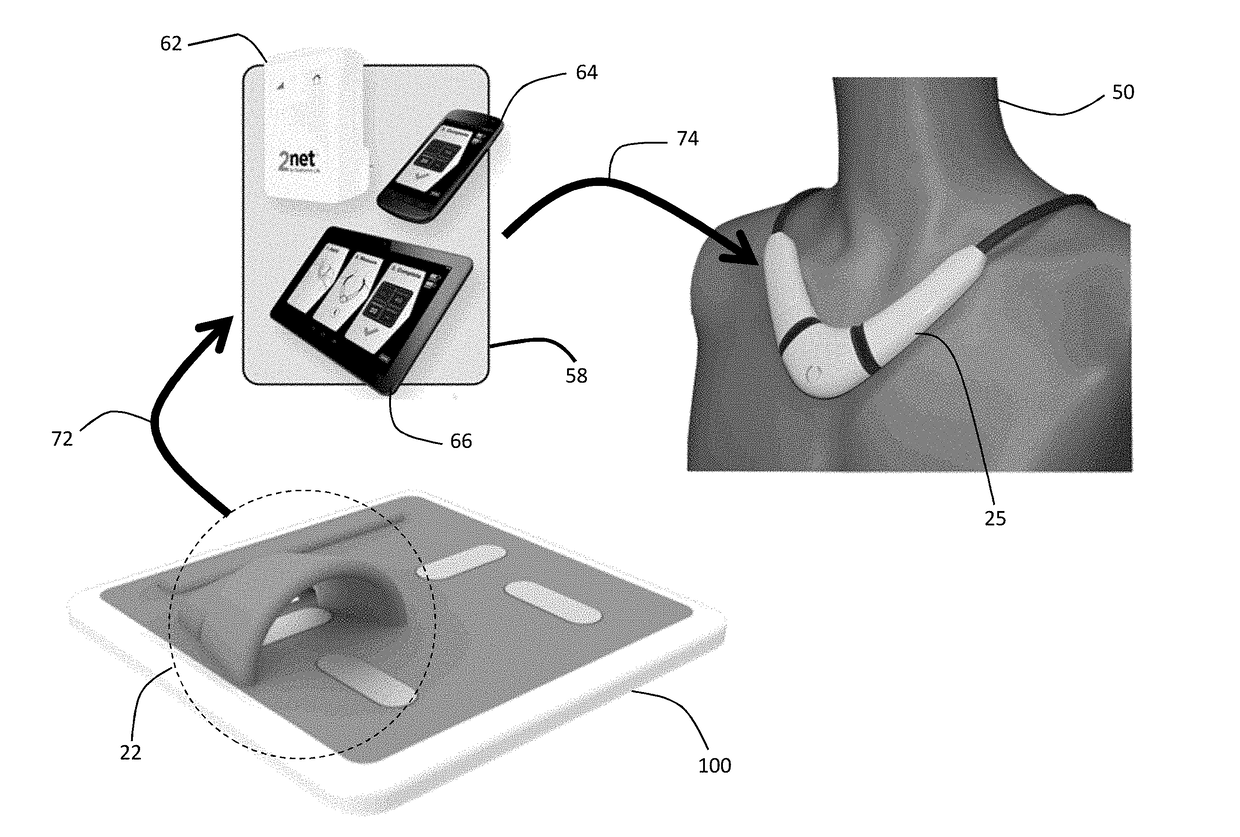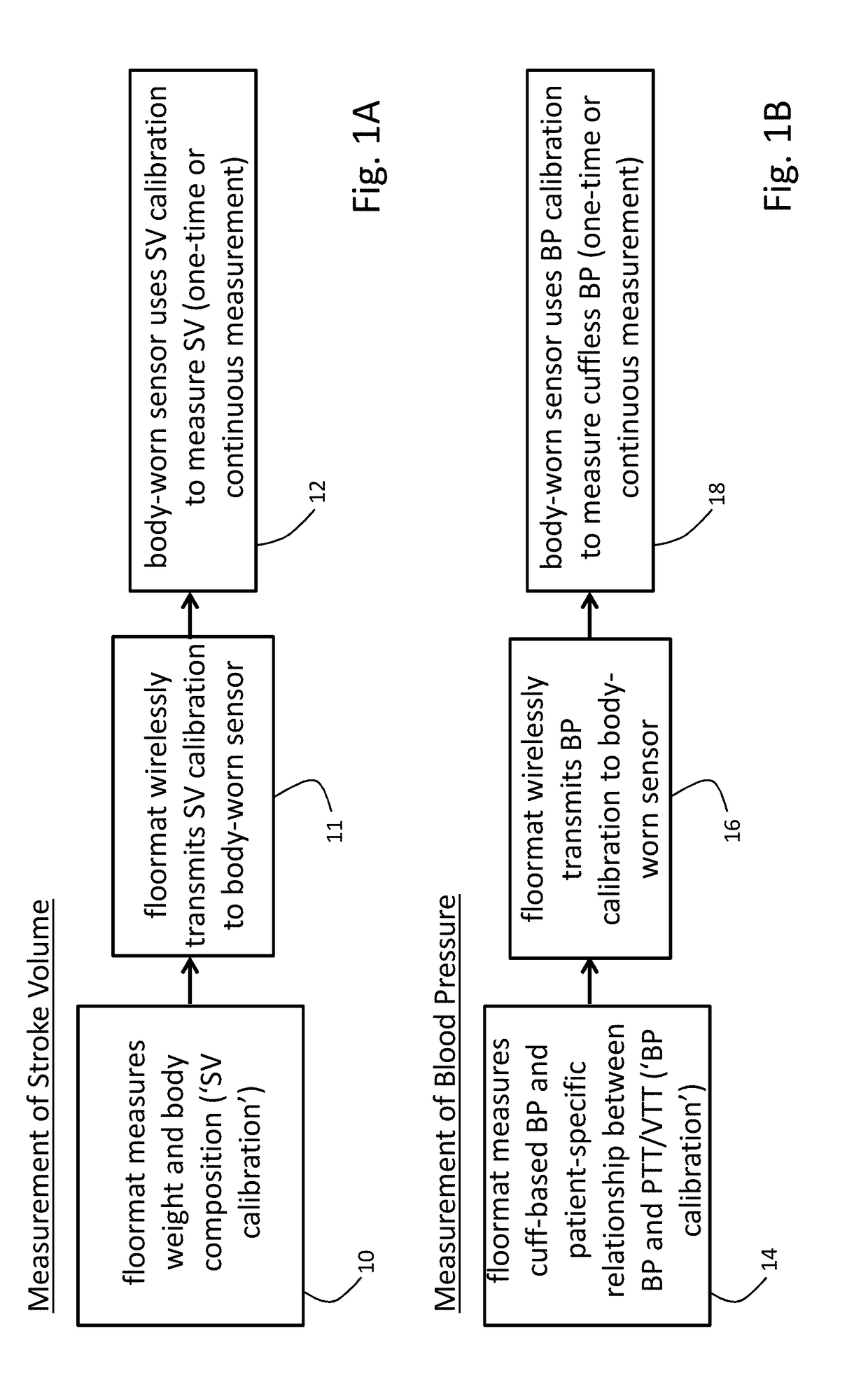Combined floormat and body-worn physiological sensors
a technology of physiological sensors and floor mats, applied in the field of sensors, can solve the problems of nullifying the value of such measurements, affecting treatment, and measurement errors, and achieve the effects of convenient measurement of vital signs and hemodynamic parameters, simple form factor, and convenient us
- Summary
- Abstract
- Description
- Claims
- Application Information
AI Technical Summary
Benefits of technology
Problems solved by technology
Method used
Image
Examples
Embodiment Construction
1. Product Overview
[0089]The invention provides a floormat and body-worn sensor that operate in concert to measure information related to a patient's vital signs, hemodynamic parameters, and body composition. More specifically, the floormat measures parameters used in algorithms on the body-worn sensor for calculating SV and BP. The two systems communicate wirelessly (using, e.g., pair Bluetooth® transceivers) so that the floormat can transmit parameters to the body-worn system, which then processes them as described above.
[0090]In general, the parameters measured by the floormat and then used by algorithms in the body-worn sensor to calculate SV and BP are not available from conventional weight scales. For SV, such parameters (referred to herein as a ‘SV calibration’) include weight and a detailed body composition measured through a combination of bioimpedance and bioreactance. For BP, such parameters (referred to here as a ‘BP calibration’) include initial values of SYS, DIA, MAP,...
PUM
 Login to View More
Login to View More Abstract
Description
Claims
Application Information
 Login to View More
Login to View More - R&D
- Intellectual Property
- Life Sciences
- Materials
- Tech Scout
- Unparalleled Data Quality
- Higher Quality Content
- 60% Fewer Hallucinations
Browse by: Latest US Patents, China's latest patents, Technical Efficacy Thesaurus, Application Domain, Technology Topic, Popular Technical Reports.
© 2025 PatSnap. All rights reserved.Legal|Privacy policy|Modern Slavery Act Transparency Statement|Sitemap|About US| Contact US: help@patsnap.com



